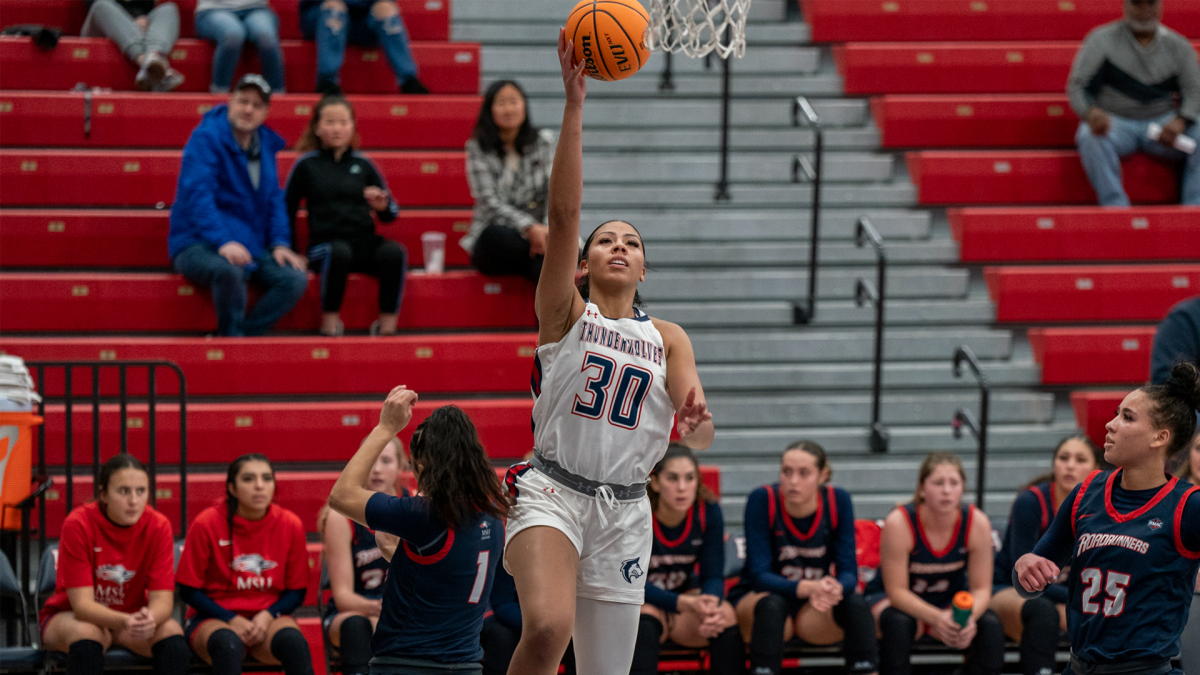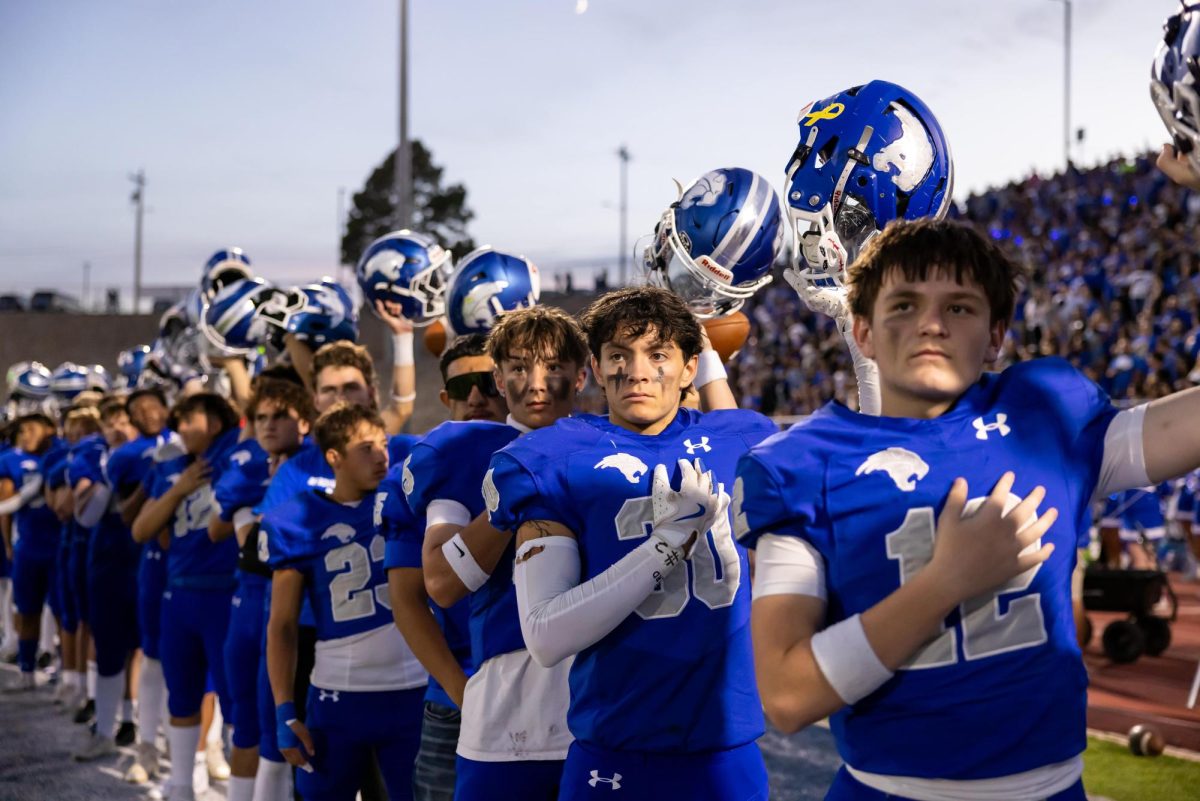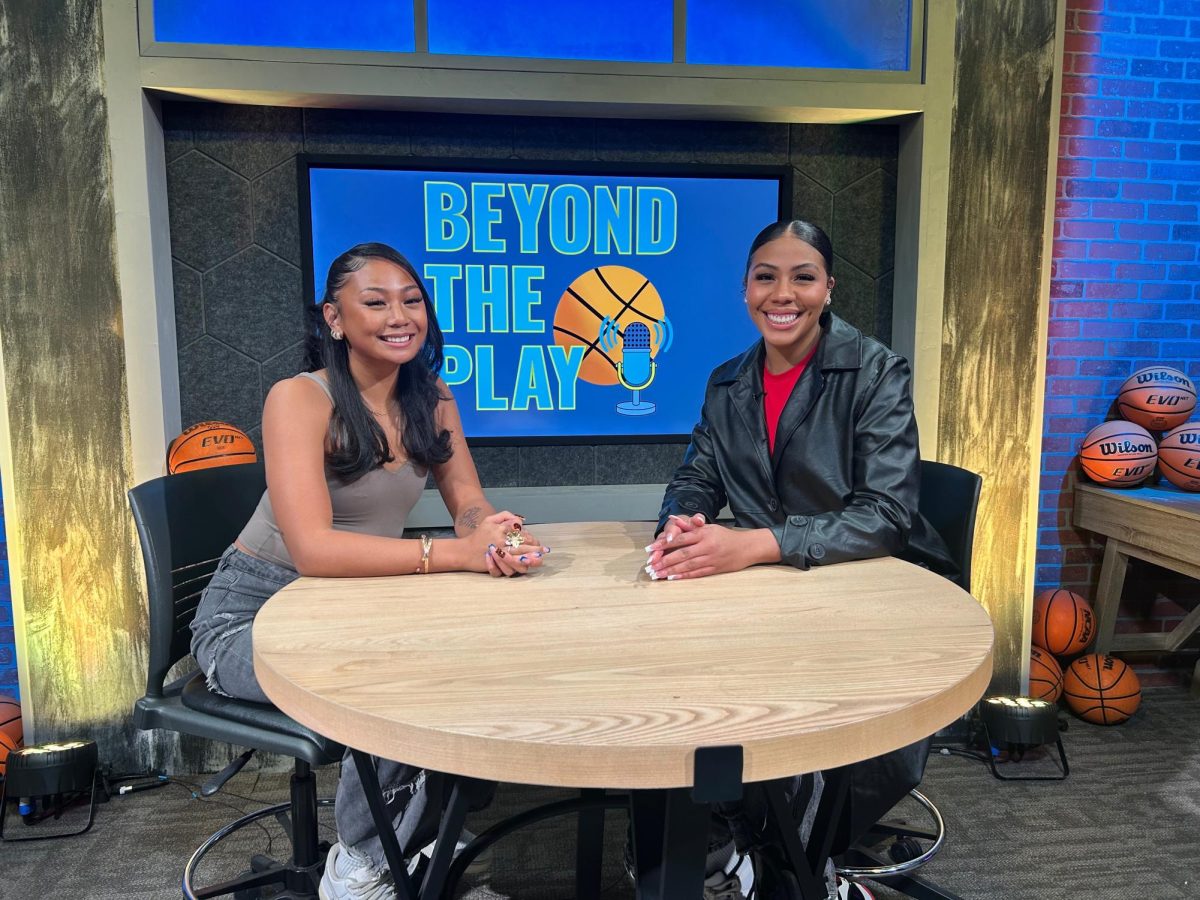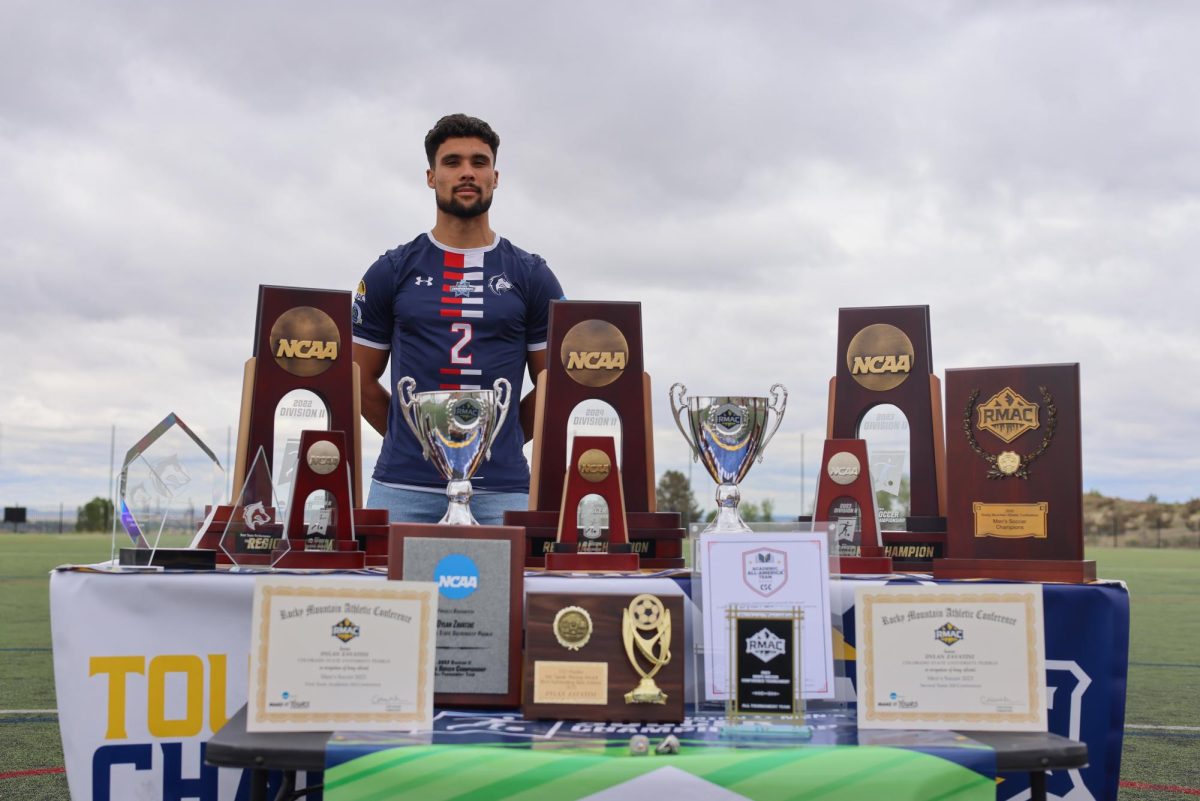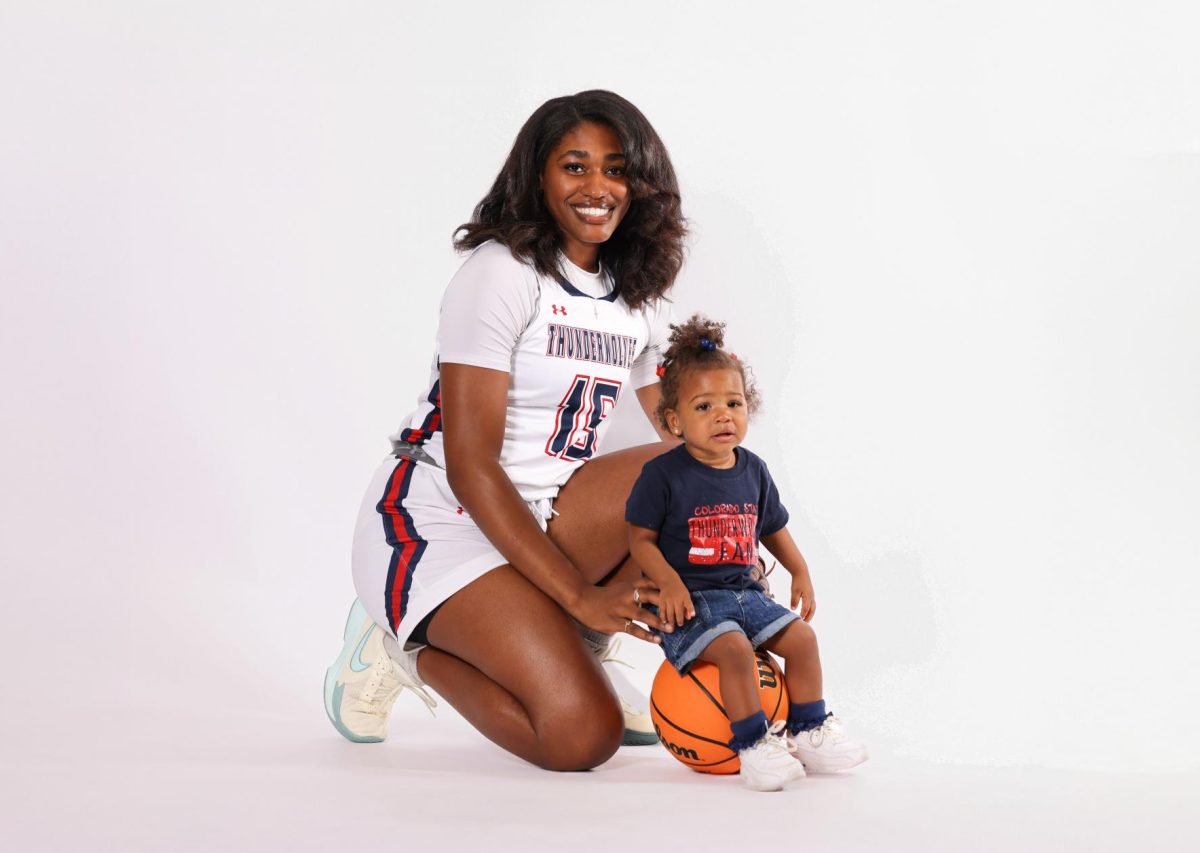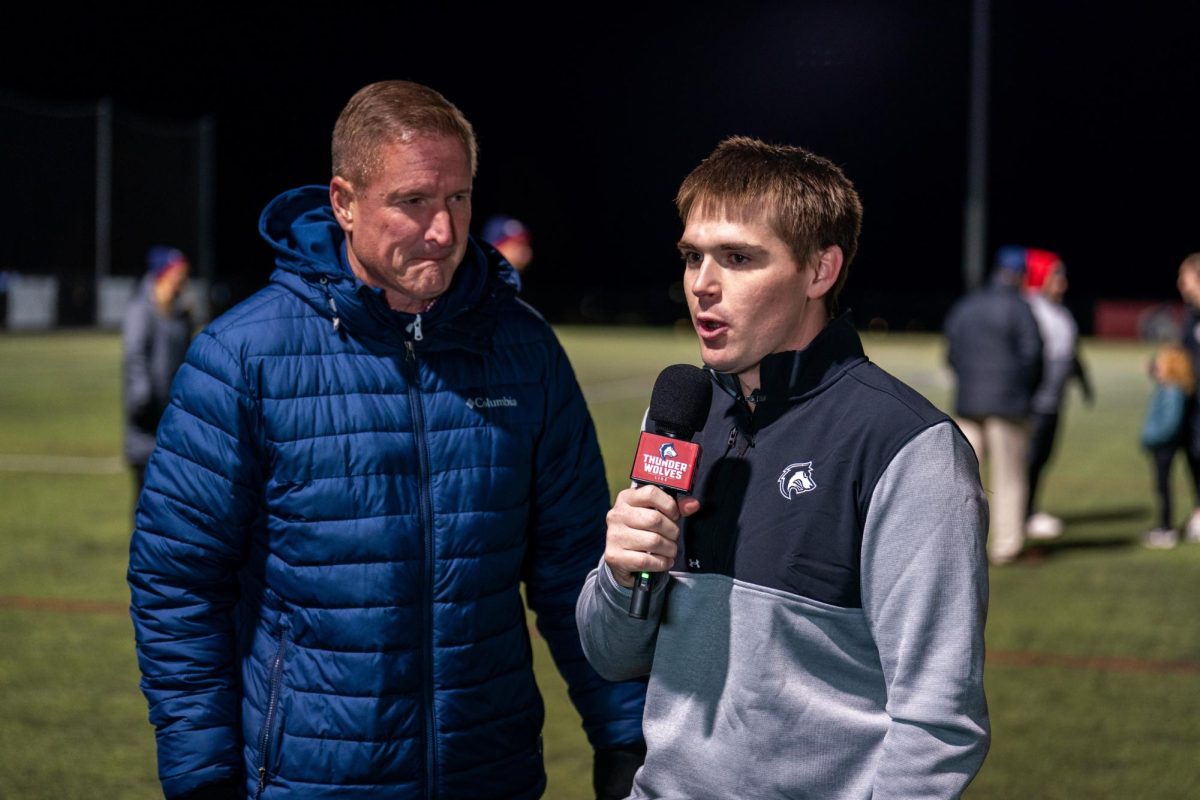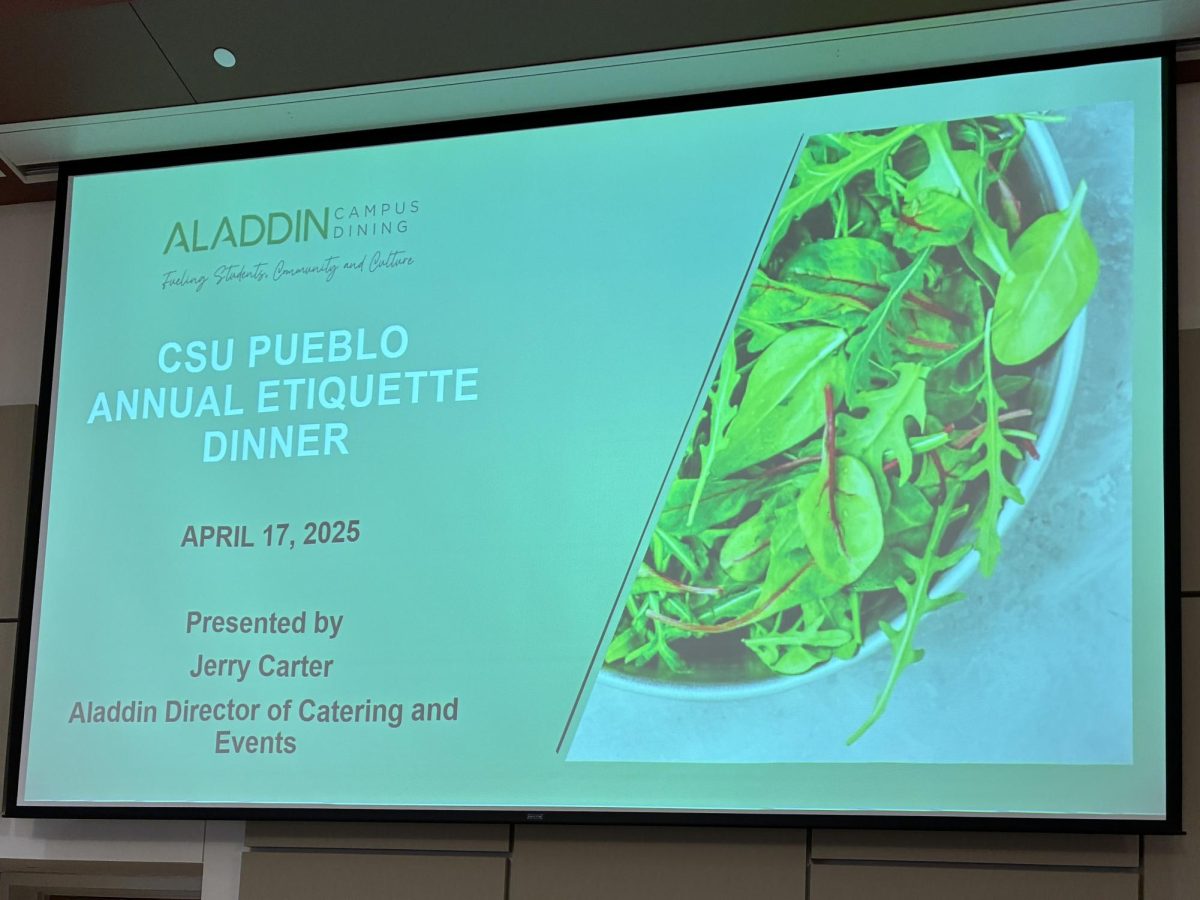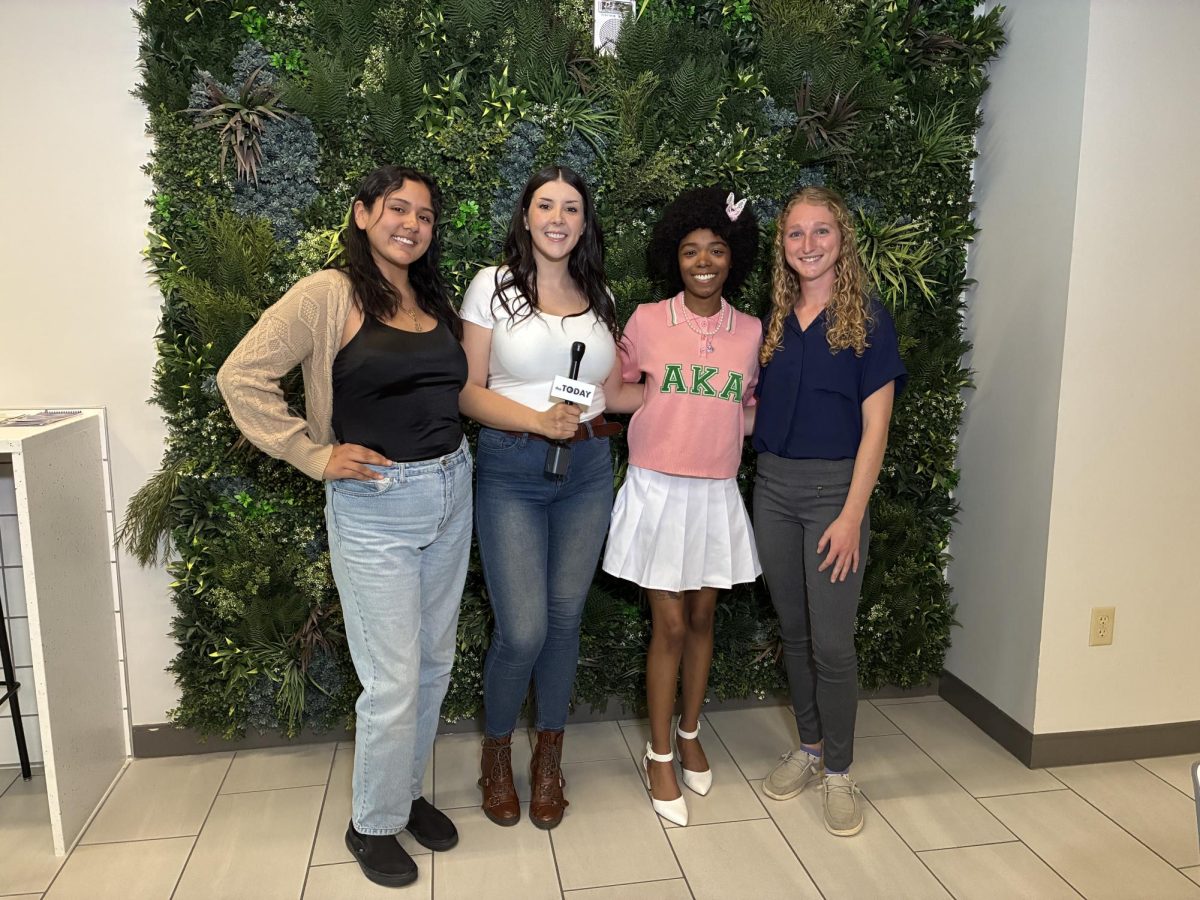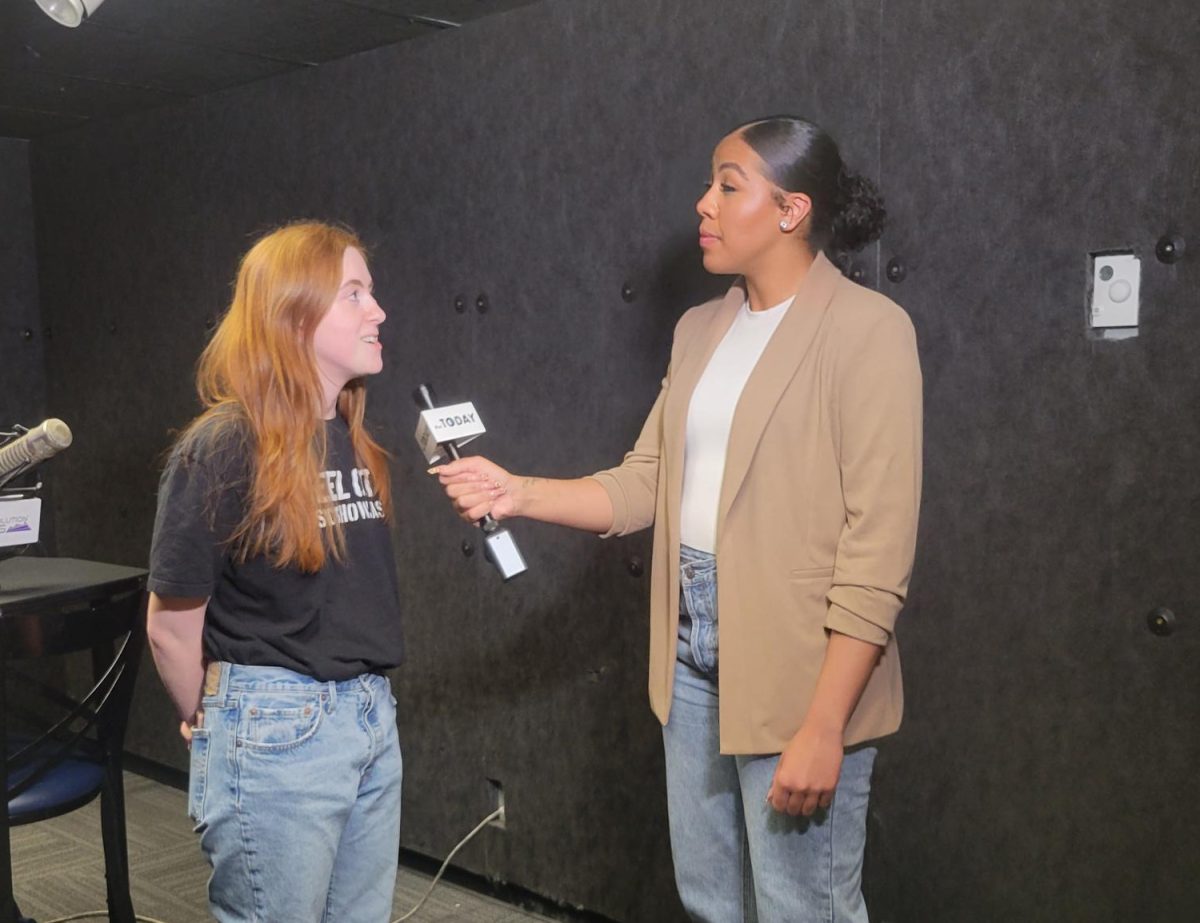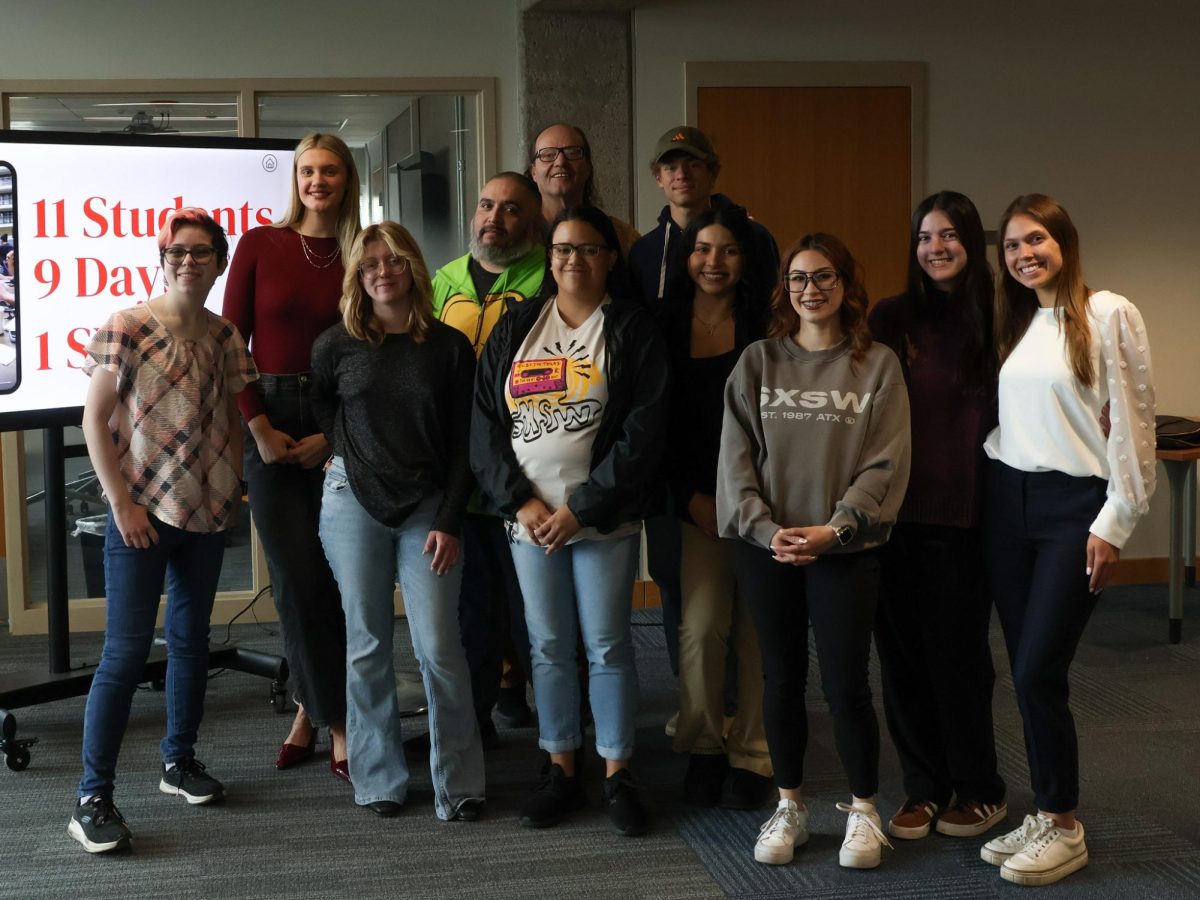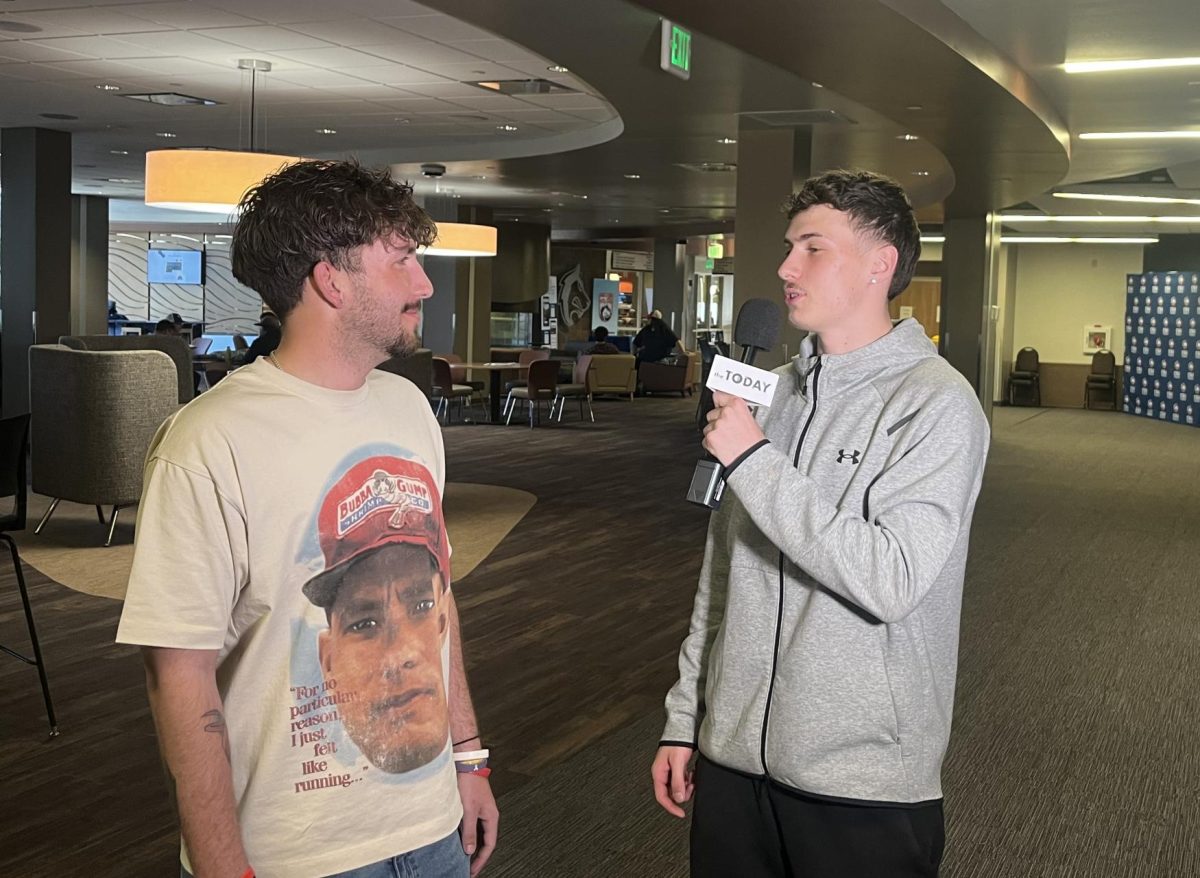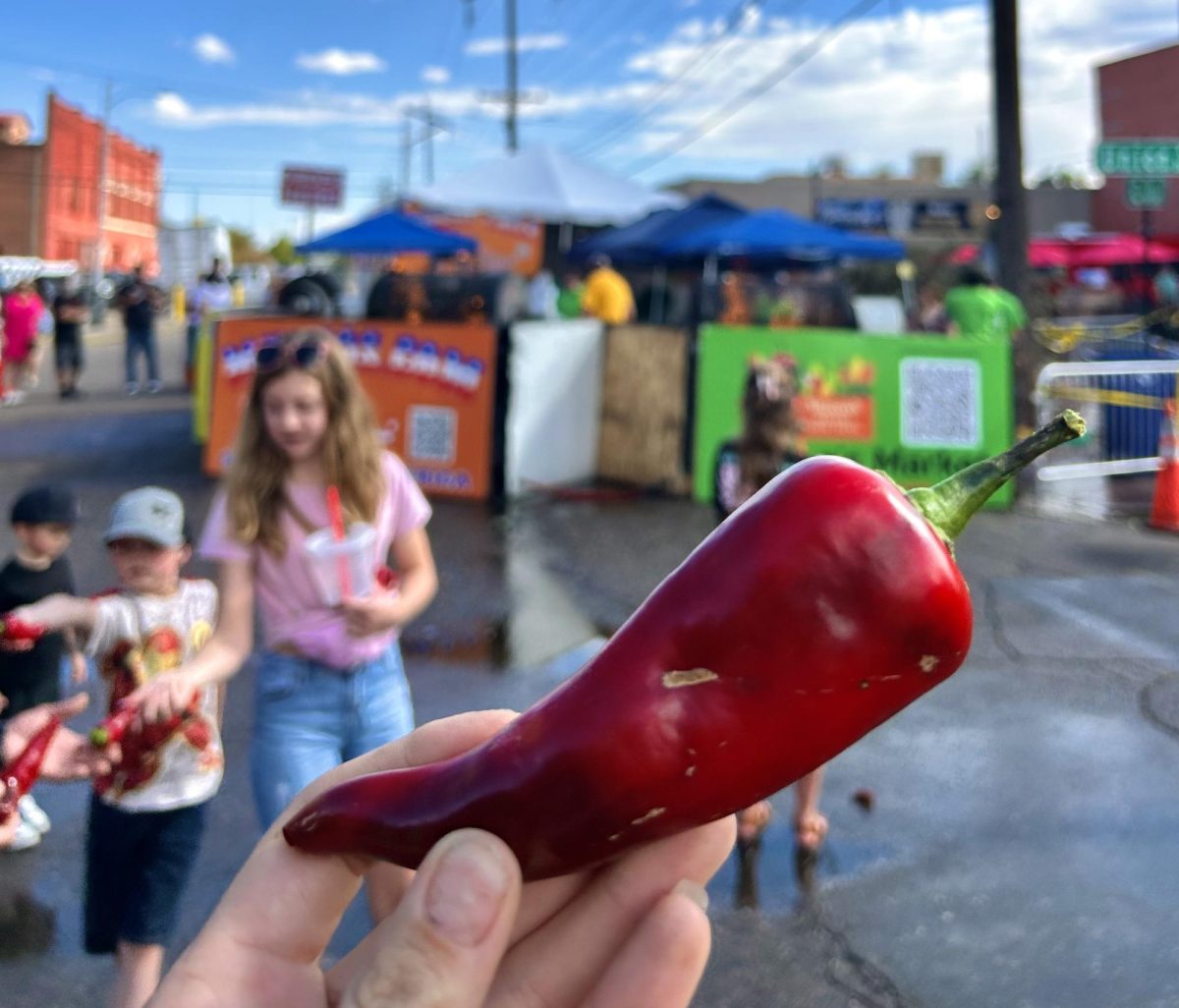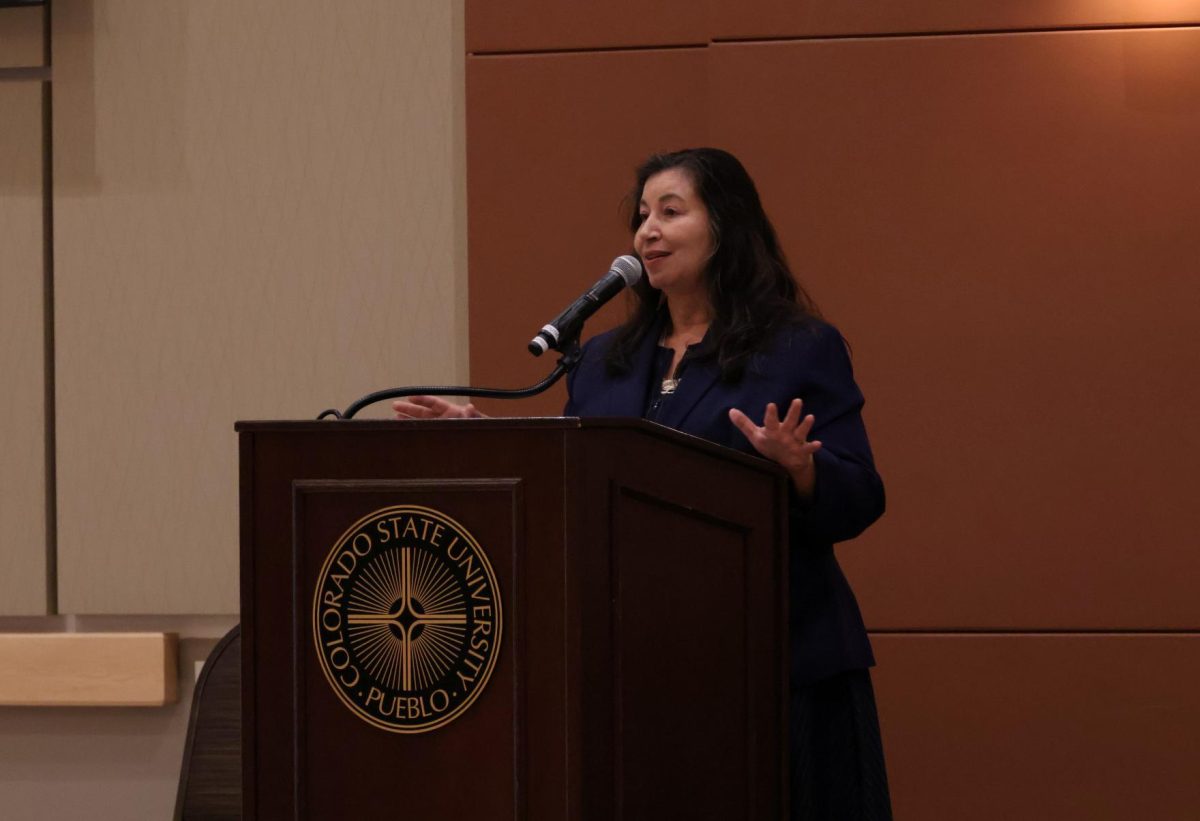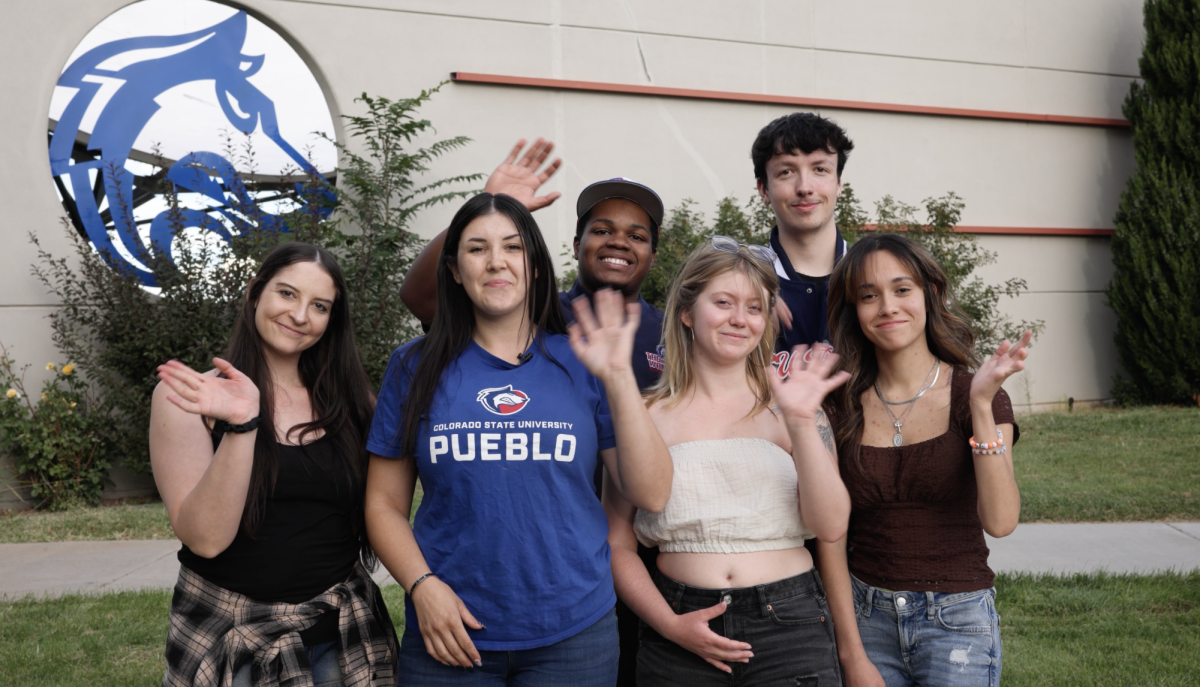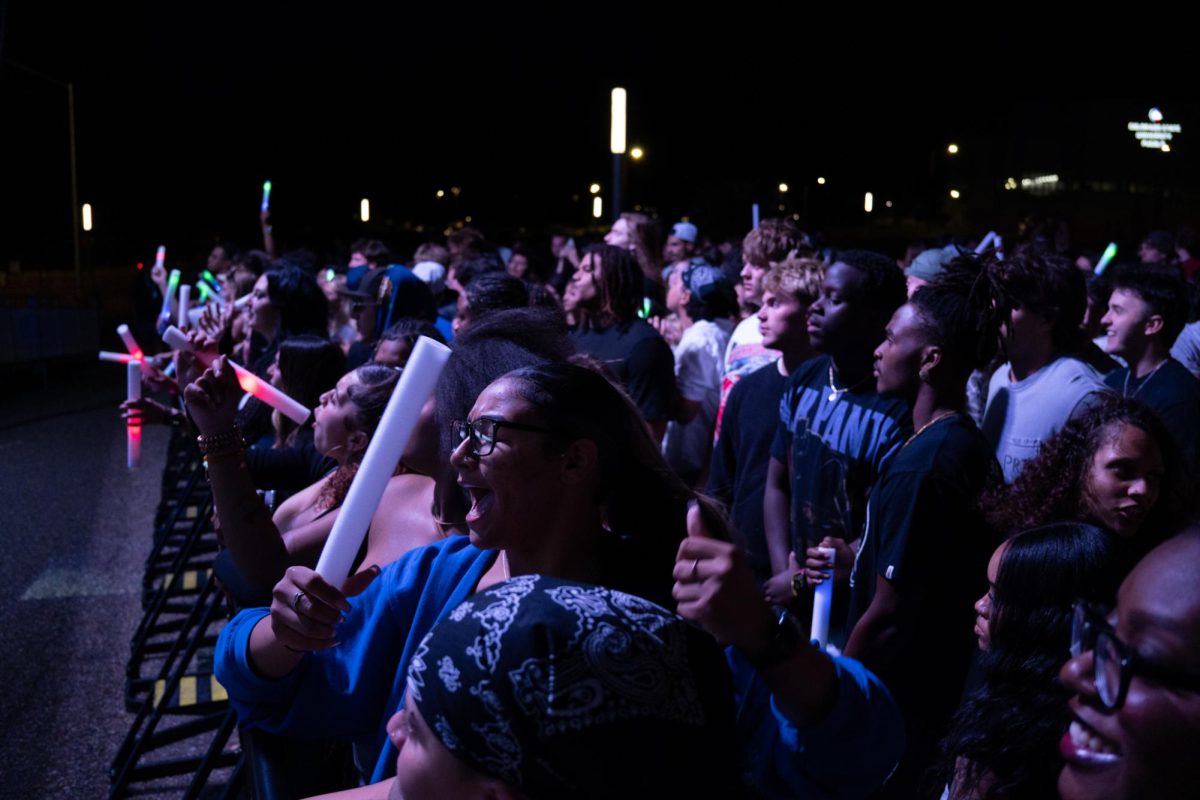Autumn Watts is a star on the Colorado State University Pueblo women’s basketball team. And although the gifted athlete makes it look easy on the court, her journey to Pueblo has been anything but.
Watts is a 6-foot-1 redshirt junior forward (FW) originally out of Centennial, Colo. This season (2023-2024) for the ThunderWolves, Watts averaged 9.6 points and 5.5 rebounds per game, and has been a key player instrumental to the team’s overall success, as the team advanced to the conference tourney where it won a game before being eliminated.
“I grew up in a sports-oriented family as my dad played basketball in high school, my mom ran track and field in high school, and now my 18-year-old younger sister plays basketball at Regis Jesuit High School. Yet basketball was not my first love and passion growing up as a kid because I was kind of forced into playing at the start by my mother when I was eight or nine years old, as I was kind of a chubbier kid growing up and she wanted me to burn those calories. So she pushed me into basketball. However, I stuck with the sport as I found a love and passion for the game and was actually pretty good at it, too,” Watts said.
Watts attended a predominantly all-white high school with a black student population of 4% in Highlands Ranch.
“As far as my experience goes, everyone was welcoming and loving there as I knew a lot of the professors there along with the dean of students. However, I faced a lot of adversity there as well as oftentimes I saw a Confederate flag on the backs of people’s trucks. In addition to that, I also experienced racism, and I would have to wake up early every day and drive 30 minutes just to go to school. Nevertheless, I persevered through all of those adversities.”
Coming out of high school, Watts was heavily recruited and received multiple offers from colleges such as Montana State, Lubber State, the University of New Mexico, Colorado State University in Fort Collins, Denver University, Portland State University, and others. But ultimately, Watts ended up committing to Div. I New Mexico University after loving her first official visit there. She was with the program for three years (2019-2022) except during the 2021-2022 season when she sat out the entire season after tearing her ACL and meniscus and fracturing her femur bone.
“I committed to the University of New Mexico because they had this amazing tutoring program where they had these academic advisors for each of our respected sports. Which I found to be very beneficial because I was able to receive help in the areas I was struggling with academically as I normally do not do well in school. But also it forced me to go to class each day as we had these papers that we needed signed saying we actually went to class. Plus, my academic advisor kept a checklist for me on when assignments were due at the end of each week, along with the fact that their basketball program was actually pretty good.
“In the beginning, I was very excited to have my own place and meet new people, even though I am a family oriented person. However, when it came to basketball, the transition from high school to college was very difficult at first because the pace was 10 times faster than what I was used to playing. Plus, I had to learn an entirely new defensive scheme: man-to-man-defense, when I was only used to playing zone-defense. I would often times call home crying to my mom because the plays were not clicking in my brain. Instead, I talked to Coach Bill Farer, who was my position’s coach and mentor at the time if I needed any help remembering plays or was questioning my playing time, to try to get a better understanding of my position on the team at that time.”
Complicating things: the COVID-19 pandemic.
“I remember with practices and games we were not allowed to do any sort of training or physical activity in the state of New Mexico, as that was put in place by the governor. Instead, we had to drive to Amarillo, Texas, get a hotel where there were four roommates to a room each, and then practice there for three weeks at a time with one week in between driving back to New Mexico to wash our clothes,” said Watts.
“In addition to that, all of the food was delivered to our rooms; we had daily testing and had to quarantine if we tested positive for COVID; and we also had to wear masks or pull-up visors while playing except for me, as I was not required to wear a mask because I was born with congenital heart disease, where my right heart valve grew into my heart the wrong way as my heart wasn’t pumping enough blood. So when I was 13 years old, I had open heart surgery to get that problem fixed, which it was, except now I occasionally have chest pains.”
She decided to use the NCAA transfer portal for the first time when she transferred to another Div. I school: McNeese State University, but she was there for only one season (2022-2023).
“When I entered the transfer portal for the first time, I was super-scared that I was going to get transferred to some Div. III school or a JUCO because there are tons of athletes who have their names in the transfer portal that are better than you. For instance, I originally wanted to go to this school in Maryland because I have family there, but the coach there stopped recruiting me as he said that they had already found another player who was a year older than me and was also more skilled than me whom they went with instead.
“Based on that little experience, I ended up committing to McNeese State two days later as the coach there was saying all of the right things; which were, ‘Uou are going to be a dominant player offensively, will score X amount of points each game and are going to be one of the leaders/captains of my team,’ all of which sadly never ended up happening.
“As far as my experience goes, it was definitely a huge life lesson for me to learn personally because I had never lived in Louisiana (the South) before, and I had to learn how to manage different mannerisms and personalities for different people over there as the people over there were super-polite to their elders by saying things like ‘Yes, ma’am’ or ‘No, sir’, which is something I did not grow up on. Also, a lot of my teammates over there came from different foreign countries like Spain, Italy and Australia, which is another thing that I had to learn how to adapt to as well.”
Watts said she left the season at McNeese early “because of an altercation I had with one of my teammates as mentally I was not OK at the time. Likewise, the coach did not do anything to protect my safety at the time as well, as I was scared for my safety. So I filed a Title 9 Hardship, which protects an athlete from sexual harassment as well as mentally, and went back home to Centennial, Colo., because I really needed the support of my family during this difficult time.”
She then transferred to CSU Pueblo, a Div. II school. Why?
“After that incident at McNeese State, I came back home to Centennial, Colo. to be with my family where I had originally planned to drop out of school and quit basketball altogether. It was not until Coach Tommie Johnson, who is the current head coach of the women’s basketball team at CSU Pueblo, showed constant persistence in me that made me commit fully to CSUP as he was not only was willing to take a chance on me when other schools would not have due to my decision to leave McNeese State early, but I could tell that knew he truly cared about me both academically and as a person, as I have known him since I was younger.
“My experience at CSU-Pueblo so far has been very fun so far, as I grew up playing against a lot of the older players on the team like Tomia Johnson, Alisha Little, Landri Hudson and Ro Dominguez with my club basketball team called Colorado Basketball Association. But on the other hand, it has also been very challenging and rewarding with this season (2023-2024) now being my fifth year playing in college, and because of that I have learned a ton on what it is like to live life, to speak up for myself when I need to, and how to trust people again after all of the adversity I have went through in my life.”
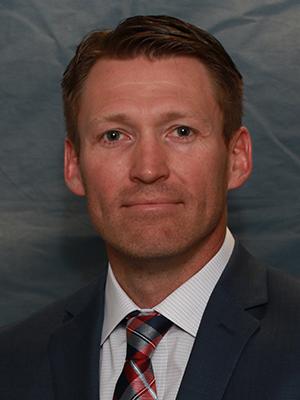
As difficult as dealing with the transfer portal is for players, it is a nightmare for college coaches. The Today recently sat down with CSU Pueblo men’s basketball head coach Matt Hammer, now in his fifth year at CSUP.
“I grew up on a small farm about 2-3 miles out of a small town in South Dakota where I idolized my two older brothers growing up as we played a lot of sports together, and it was kind of difficult for me to hang out with my friends because the farm I grew up on was kind of isolated. So basketball for me was my escape where I could just be by myself and shoot baskets.
“The other reason I really liked basketball was that I was a huge Michael Jordan and Chicago Bulls fan growing up. As my favorite Michael Jordan quote is: I’ve missed more than 9,000 shots in my career. I’ve lost almost 300 games. 26 times, I’ve been trusted to take the game-winning shot and missed. I’ve failed over and over and over again in my life. And that is why I succeed.’ To me, this quote means that your failures in life and as a player are what motivate you to succeed,” Hammer said.
“As far as how I got into coaching, it was because of what I learned as a player under the legendary coach (Northern State University) Don Meyer, who retired back in 2010 as the all-time winningest coach in program history with a record of 923 program wins and 324 losses,” Hammer said.
“As far as my overall experience goes, it was a really eye-opening experience to learn under Coach Meyer because as a player under him, I did not get to see all of the behind-the-scenes stuff, the long hours, hard work and dynamics it takes to run a successful college basketball program. Plus, I got to see Coach Meyer in a different light as his last two years of coaching were my first two years of coaching, along with the fact that I got to see him overcome adversity. He got into a really bad car accident at the time where he fractured his leg so badly that he had to have it amputated from the knee down. Also, he found out he had carcinoid cancer, a slow-growing cancer that grows throughout your body and spreads and you do not realize you have it. So it was cool to see him overcome this adversity with such a positive mindset,” said Hammer.
His first assistant coaching job was at the NCAA Div. II school Saginaw Valley State University, where he coached from 2012-2014.
“At Saginaw Valley State University (SVSU), the head coach at the time was Randy Baruth, who had just gotten the head coaching job there and whom I was already familiar with as he was my assistant my last two years when I was the assistant coach at my alma mater NSU. As far as my experience goes, my role on the team was to get the absolute best out of the players of the team. And when Coach Baruth and I got there, the basketball program was not really established well, so we had to build the program from the ground up, which was something I had never learned or done before.”
Then he got his first head coaching job at Div. II school Sheridan College, where he spent five seasons and finished with an overall record of 118 wins and 43 losses.
“I got the coaching job at Sheridan College from a former teammate of mine I used to play with in college at my alma mater named Steve Smiley, who at the time was the head coach of Sheridan. So he had reached out to me because his assistant at the time was leaving and he had an open position available as an assistant coach. I accepted the job because Coach Smiley said that the assistant position was the best place to start and eventually work your way up to the head coaching role, as he himself had told me that he was planning on leaving to coach at a top-four-power school. So eventually I worked my way up and was awarded the head coaching position.
“During my time as the head coach, at first it took some time for me to get used to because it was not only my first head coaching role, but also the team didn’t have a very good record my first season there as head coach. However, thanks to some excellent recruiting, we were able to get better year after year, and eventually I got more and more confident as a head coach,” said Hammer.
When asked about his personal thoughts/feelings on the transfer portal, Hammer said: “I personally do not like the transfer portal as a whole because it is way tougher now than it was 20 years ago to build a team culture and environment when you have multiple players leaving and coming into your program each year. As a result, I have learned that as a coach, I need to communicate effectively with all of my student-athletes because you cannot expect them to know what you want as a coach without actually teaching them.”
Complicating matters was the Covid pandemic.
“The extra COVID year made the competition more difficult year after year because you have players coming back for their extra year of eligibility that were supposed to have graduated the previous year, which in return makes the competition the following year that much harder. An example of this is that there are athletes who are now in their fifth, sixth, seventh, eighth and even sometimes ninth years of eligibility due to having injuries multiple years, as well as the extra COVID year. As a coach, this makes my job extremely difficult because there are players constantly leaving or coming in year-after year in the transfer portal.
“Last year during the 2022-2023 season, we lost six guys to the transfer portal who had been with the team a number of years already, which as a coach was extremely difficult to deal with because we had invested a lot into those players. It was also difficult because personally I got to know each and every one of those players, and even invited them around my family, so it was extremely difficult to watch those guys leave in the portal.
“However, this year (2023-2024 season), we have brought in nine new transfer players alone from the portal. As a coach, with this consistent change of players continuously coming in and out of our program that we as a team are trying to build here at CSU-Pueblo, I have had to learn how to adapt to all of that constant change by trying not to make it so personal because the players that are leaving or that are coming in are trying to find a team and environment that will work better for them that is different from their old environment as there could be a multitude of reasons they decided to transfer. So as a coach, I need to keep that in mind.
“The team culture I want to build here at CSUP is a team that is not only well-rounded and extremely competitive, but also a team built on togetherness on and off the court because I want our student athletes to be great student representatives not only here at CSU Pueblo but also within the Pueblo community. This is extremely important to me as the head coach when trying to build or implement the culture/atmosphere I am trying to build here at CSU-Pueblo because I personally believe that there is more to life than dribbling a basketball, as I am trying to teach our student athletes this message in order to shape them into becoming wonderful young men in life.”




